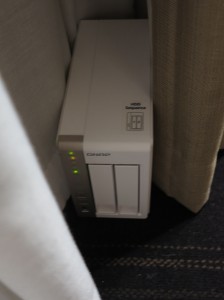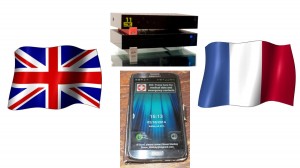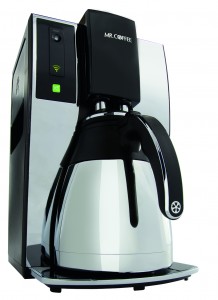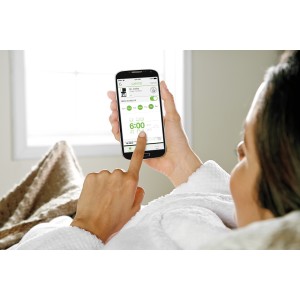Articles
Pay TV market becoming more segmented; service providers can take advantage | V-Net
My Comments
The connected home and ubiquitous Internet access is placing the traditional Pay-TV marketplace at a crossroads. More and more people are using tablets and laptop computers to view content that is streamed from the Internet when they want to view it in a personal setting while TVs and video peripherals like Blu-Ray players are serving as integrated endpoints for viewing various Internet-hosted video services.
Here, a few content packages with many channels that is delivered by the service provider’s own infrastructure and viewed via equipment supplied by that provider doesn’t cut it anymore. In North America especially, where the customer deals with pay-TV providers who primarily offer a content-carriage service, younger people are “cutting the cord” on pay-TV service and watching either over-the-air content or content delivered “over-the-top” by independent “over-the-top” TV services like Netflix.
The traditional pay-TV companies are having to take a few different paths to gain and retain customers.
Service offerings
TV Everywhere
This is sold in conjunction with a traditional pay-TV service like Sky Go or Foxtel Go but has the content delivered over “two paths” – the traditional cable or satellite infrastructure along with the Internet. This is primarily to allow the customers to view the same content on their computers or their mobile devices.
Typically this is furnished using an app or Web page for most desktop and mobile computing platforms where you can watch the content, and you typically authenticate with the service provider by providing your account details to that app. Some providers may allow you to view this content only in your own home while others may allow you to view it anywhere in the country that they operate in. Some of these services may offer a “download now, view later” option where you can download content to view at a later date especially if you may be in a position where you don’t have reliable Internet access.
Over-The-Top Pay TV
Another direction is to provide an “over-the-top” pay-TV service like NOW TV or Foxtel Play which works with your computer, tablet, games console of the XBox One or PlayStation 4 kind, Smart TV or similar device. These services are typically provisioned over the Internet without the need for a set-top box to be delivered to you and provide for increased package flexibility.
For example, they are provided by-the-month rather than on a multi-month long-term contract and allow for increased segmentation of content. In this case, we are starting to see the availability of separately-branded “lightweight” or “budget” content packages pitched at this form of delivery or for people to choose packages based on a personally-selected mix of genres or other factors that appeal to them.
On-demand content
The pay-TV provider is now entering a position to run an Internet-based on-demand content service which has a larger content library than what was available on their “video-on-demand” or “pay-per-view” services that were furnished via their traditional cable or satellite infrastructure.
They can offer these services to their existing customer base as an adjunct to the pay-TV services that they are offering or simply provide them to other people as a standalone “over-the-top” service. The former setup will typically have a “download-to-view” component for customers who use a PVR-type set-top box like a Foxtel iQ2 where the show would be downloaded to the device’s hard disk for later viewing.
Other offerings
Another service that could be evolved would be the so-called “multi-room” or “multi-screen” options which are typically offered by some pay-TV providers on a “per-room” basis. In a lot of cases, this could encompass an integrated TV Everywhere service.
Thanks to DLNA’s VidiPath technology which I covered previously, they could be offered simply as a “per-household” basis which or even as part of the regular content package for a regular pay-TV service. It could mean that the extra TV would be equipped with a Blu-Ray player, network media player or games console that is VidiPath-certified while the main DVR-equipped set-top box is a VidiPath content server. TV manufacturers could even roll out Smart TVs that have this feature. Not sure if you have such equipment? The pay-TV provider could sell a cost-effective VidiPath-certified network media player to connect to your regular TV and home network to benefit from this service.
Trends
But why are they offering these services?
Young people and the connected lifestyle
One reason is to court the younger consumers who are Internet-focused and device-agnostic. Here, they see the large-screen TV serving as a display for other devices like games consoles or Blu-Ray players; or they see regular and mobile computer equipment as something they can watch video content on.
As well, they live on the Internet with a desire to have their video-content viewing linked with other interactive activity. For example, they want to use the Social Web or online knowledgebases in conjunction with what they are viewing. As well, we are living a time-poor lifestyle where we wouldn’t have time to spend on poor-quality TV content.
The traditional pay-TV business model that is focused around dedicated infrastructure and the set-top box doesn’t cater for this readily especially as Internet-based technology marches on very quickly. A
Content providers are offering “direct-to-consumer” packages
In North America particularly, content providers who used to provide their TV content via a pay-TV service are now offering their content on a “direct-to-consumer” basis. This is following trends in other industries where product manufacturers and distributors are setting up online and other storefronts to provide their wares direct to the consumer in addition to having retailers sell them.
This has come about due to the “cord-cutting” trend that is occurring there, along with an increasing number of situations where a content provider who had pay-TV presence across the whole of the US is not likely to have this same level of presence. The latter situation has been brought about due to arguments and fights between the content provider and the cable-TV or satellite-TV provider about content-licensing terms.
Conclusion
I reckon that as the bandwidth improves, it could be come another path for delivering multichannel TV content in a highly-flexible cost-effective manner. Let’s hope it doesn’t become “101 channels and nothing on” – many channels and content providers that provide nothing but worthless content.









